Examine the color
Real rubies should possess a deep, rich hue that appears almost luminous. Fake rubies may have a lighter and less vibrant color.
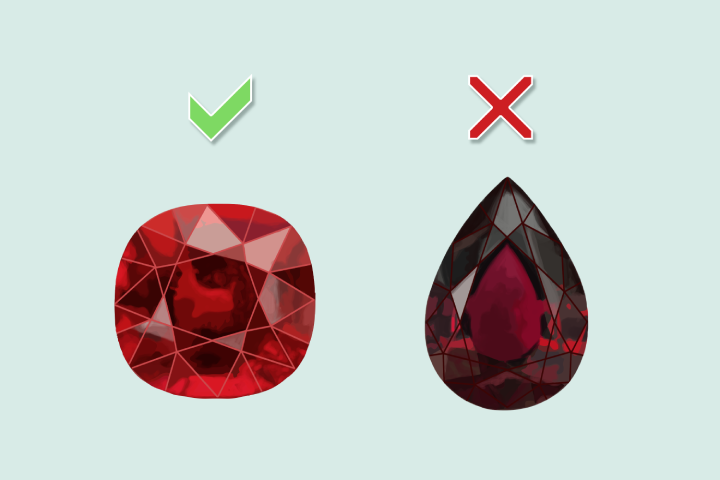
Examine for blemishes
Using a loupe or magnifying glass, closely inspect the ruby for any imperfections or inclusions.
Real rubies will often have small inclusions or blemishes, including needels, silk, crystals, twinning, fingerprints, feathers, or color zone.
Fake stones tend to be flawless. Meanwhile, lab-created ruby, glass-filled ruby or glass may contain air bubbles.
Real rubies will often have small inclusions or blemishes, including needels, silk, crystals, twinning, fingerprints, feathers, or color zone.
Fake stones tend to be flawless. Meanwhile, lab-created ruby, glass-filled ruby or glass may contain air bubbles.
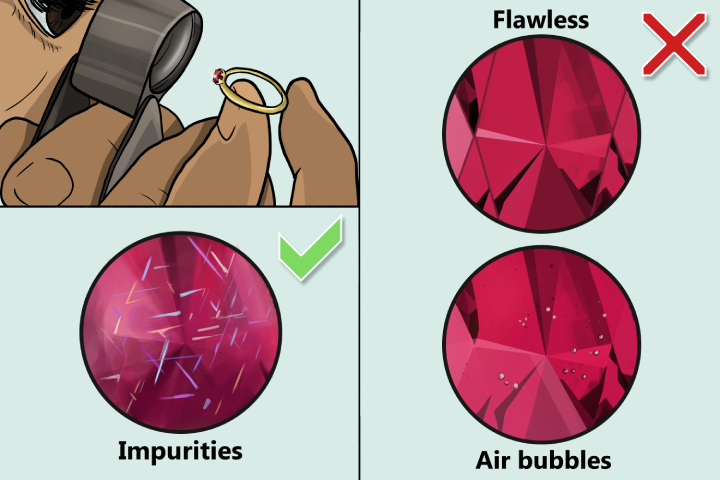
Examine the fogging effect
To perform this test, hold the ruby close to your mouth and breathe on it gently. Observe how long it takes for the fog to disappear. A real ruby should clear up within one or two seconds, while a fake ruby may take longer to clear.
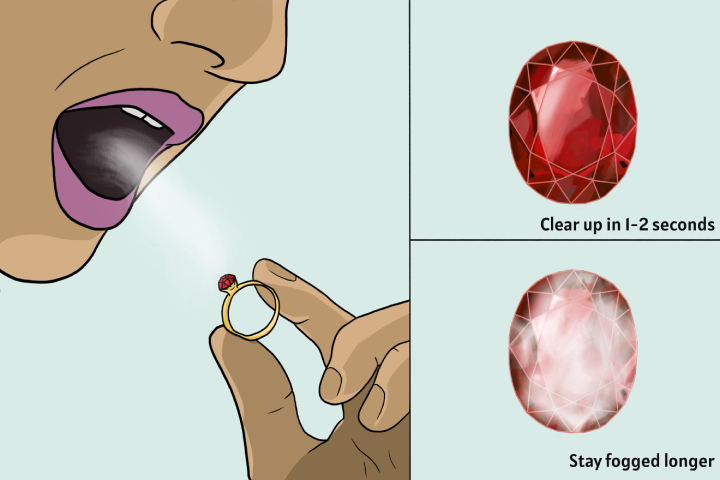
Check for scratches
Using a hard, smooth surface, such as a piece of glass, try scratching the ruby. If the stone leaves a red streak, it is likely a fake. Real rubies will not leave any color behind on the surface. Keep in mind, this test only confirms a ruby is fake, as if it does leave a trace of color, it cannot confirm it is real.
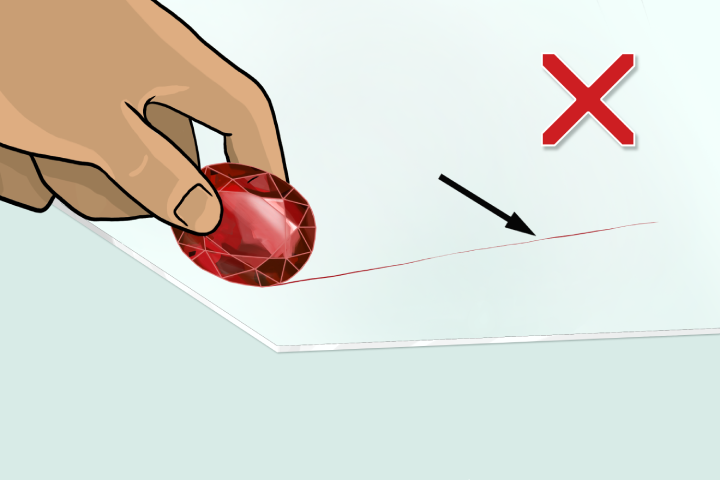
Test the ruby's hardness
Using the Mohs scale of mineral hardness, rubies are a 9 out of 10. This means they are very durable and can only be scratched by a diamond. Test your ruby by attempting to scratch it with a coin or keys. Real rubies should not be scratched by these everyday items, while fake rubies may show signs of wear or scratching.
Notes: Keep in mind that this test can damage a fake ruby.
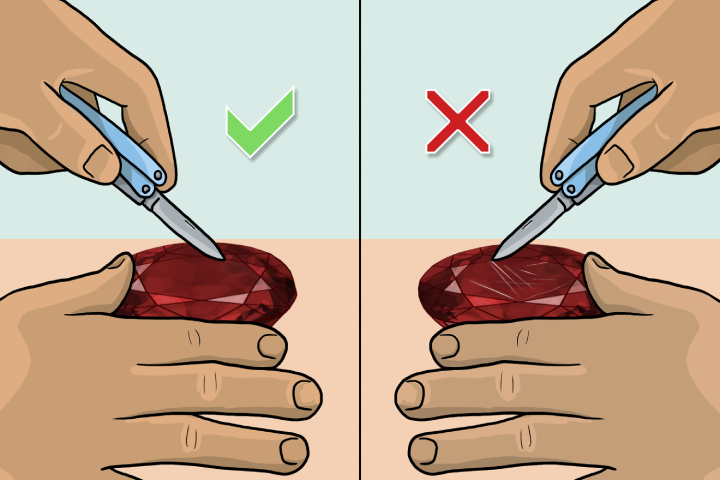
Compare to glass
Glass is often used to imitate ruby. Hence, we can compare a ruby to glass to test if it is real. Get a piece of glass that has a similar color and hue to the ruby you’re examining. If the two have the same color, it’s likely a fake ruby. Real rubies will never have the same color as regular glass.
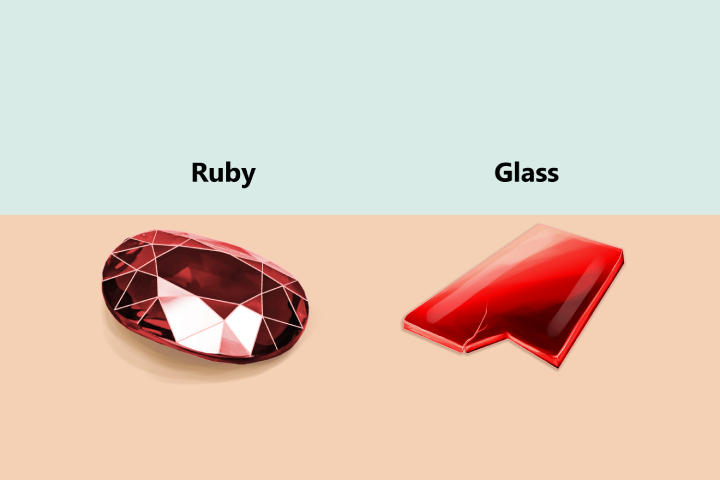
Check for signs of wear
Fake rubies may appear worn or damaged more easily than real ones. Under magnification, check the edges of the facets for signs of wear, such as softness or rounded edges. Fake rubies may also have a dimpled or “orange peel” texture. Be cautious of any rubies that seem to have been worn down too quickly.
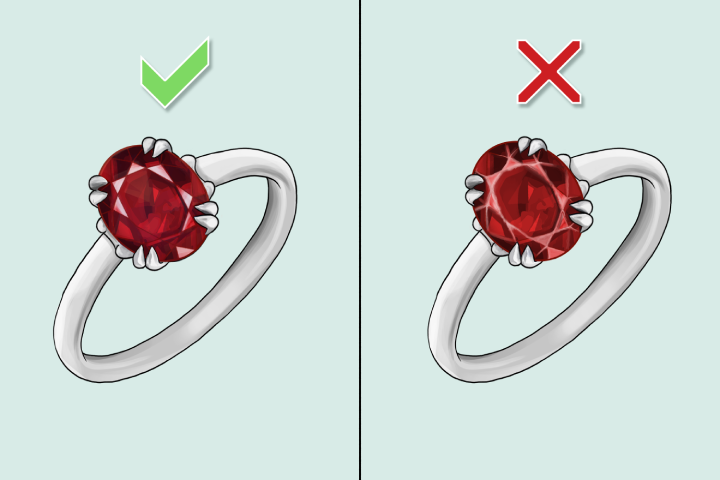
Check for composite Ruby
Composite rubies are made from a mix of low-quality natural ruby and red lead-glass. They often contain internal gas bubbles and intersecting lines, which can be visible under certain light conditions. These features can help identify composite rubies.
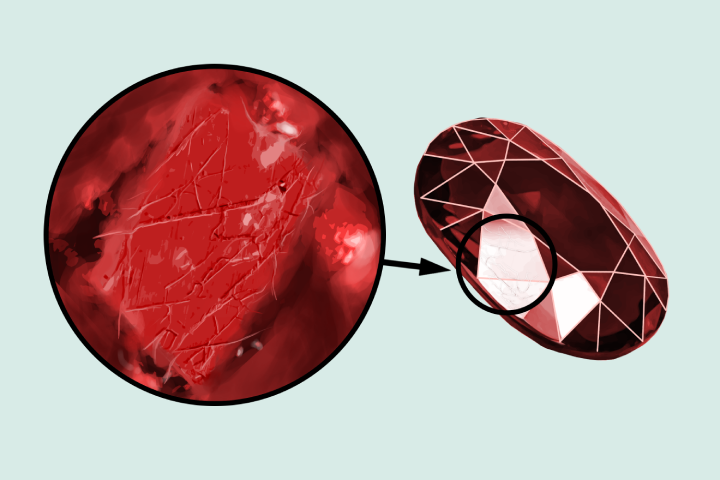
Examine the cost and dimensions
Real rubies can be quite expensive, typically above $1000 per carat. If the price seems too good to be true, it’s likely that the ruby is a synthetic or imitation. Additionally, natural rubies are rarely found in large sizes. If a ruby is particularly large, it’s likely synthetic or imitation.
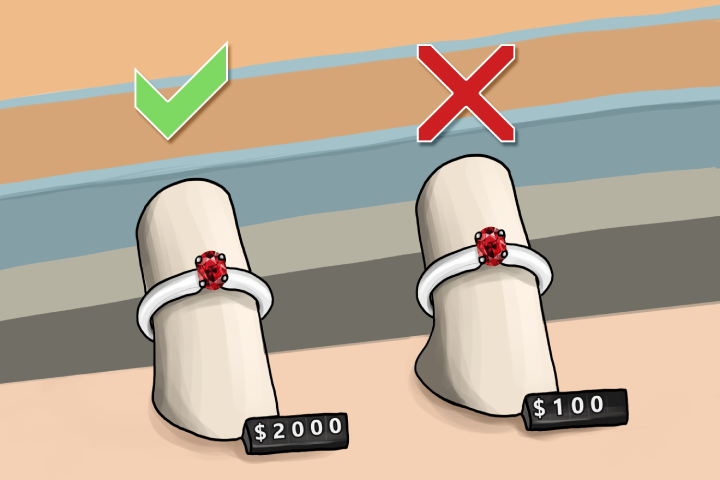
Tips for Authenticating a Ruby
- It’s a good idea to use multiple methods to determine the authenticity of a ruby, as no single test is foolproof.
- If you are unsure about the authenticity of a ruby, seek the evaluation of a professional. They have the expertise and specialized equipment needed to accurately determine the gem’s authenticity.